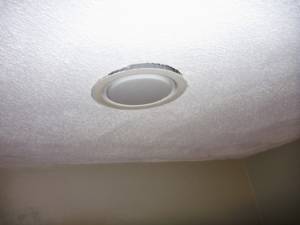Fiberglass insulation from the attic, air ducts, and above the ceiling can break apart and enter the airspace through cracks and openings within recess lighting, air vents and other fixtures. We recommend testing your air for fiberglass and seal all fixtures to prevent unwanted glass intrusions. Children and Asthmatics appear most sensitive to elevated fiberglass counts with symptoms ranging from irritated eyes, persistent coughing, and runny nose.

Harmful Health Effects
- persistent, dry, hacking “barking” cough
- sore throat, bloody taste in throat or blood in sputum
- bloody nose
- persistent, occasionally very severe, sinusitis and rhinitis which does not respond to common medical treatment
- headaches, nausea, dizziness, insomnia, irritability, depression,
- asthma-like breathing attacks or constant wheezing,
- other allergy-like symptoms (which do not respond to allergy treatment),
- “reactive airway disease,”
- swollen, red, watery, infected eyes,
- skin infections, ranging from mild to very severe, requiring hospitalization,
Contact your physician and seek medical support to ascertain effects of indoor air pollutants in relation to any healthy symptoms.
Fiberglass is very difficult to remove from furnishings, surfaces and suspended particles in the air. Most of all, pay extra attention while HEPA vacuuming surfaces and with air scrubbing to remove fiberglass particles.







